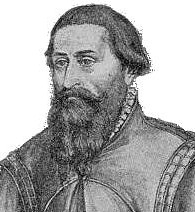Veit Stoss
| Veit Stoss | |
|---|---|
 |
|
| Born | before 1450 Horb am Neckar |
| Died | September 20, 1533 Nuremberg |
| Resting place | St. Johannis cemetery, Nuremberg |
| Known for | Sculpture |
| Movement | Late Gothic, Northern Renaissance |
Veit Stoss (also: Veit Stoß; Polish: Wit Stwosz; before 1450 - about 20 September 1533) was a leading German sculptor, mostly in wood, whose career covered the transition between the late Gothic and the Northern Renaissance. His style emphasized pathos and emotion, helped by his virtuoso carving of billowing drapery; it has been called "late Gothic Baroque". He had a large workshop and in addition to his own works there are a number by pupils. He is best known for the altarpiece in St. Mary's Basilica in Kraków, Poland.
Stoss was born at Horb am Neckar before 1450; his exact date of birth is unknown though it may have been in 1447. Nothing about his life is known for certain before 1473 when he moved to Nuremberg in Franconia and married Barbara Hertz. Their eldest son Andreas was born there before 1477, when Stoss moved to Kraków, the royal capital of Poland, where he was commissioned to produce the enormous polychrome wooden Altar of Veit Stoss (Ołtarz Wita Stwosza) at St Mary's Church in Kraków. His son Stanisław was also a sculptor. Veit lived and worked in Krakow for the next twenty years. His name is usually polonized as Wit Stwosz.
The altar in Kraków was completed in 1489, and was the largest triptych of its time. Like Stoss' other large works, it required a large workshop including specialized painters and gilders. Other important works from Stoss' period in Poland were the tomb of Casimir IV in Wawel Cathedral, the marble tomb of Zbigniew Oleśnicki in Gniezno, and the altar of Saint Stanislaus. The Polish court was more aware of Italian styles than Nuremberg patrons of that time, and some of Stoss' Polish work used Renaissance classical ornament.
...
Wikipedia
